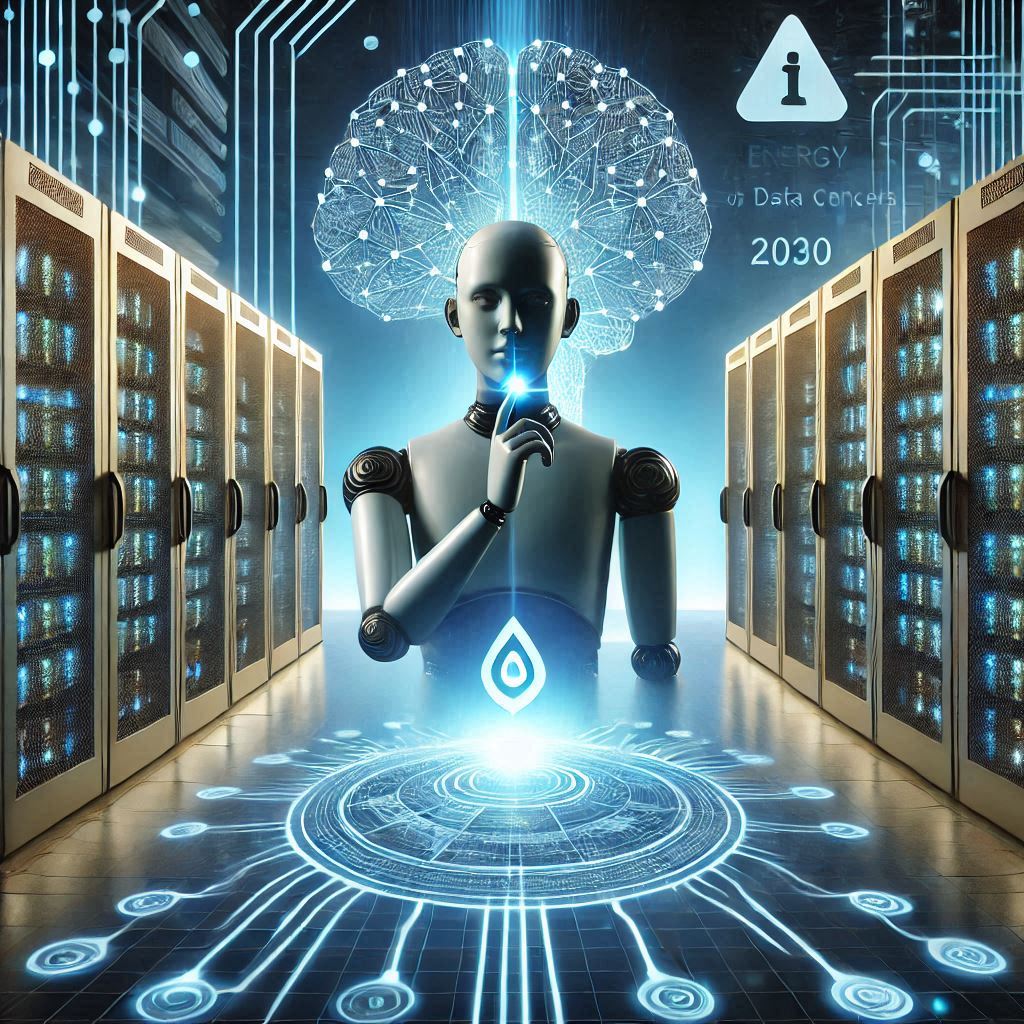Artificial Intelligence’s huge expansion is bound to change energy demand worldwide by 2030: Data centre energy consumption is set to surge 160% by 2030, which will be the driver for new infrastructure investments across the United States, Europe, and beyond, shifting energy costs in various ways. It takes about 2.9 watt-hours of electricity to use ChatGPT for one query. By contrast, that is roughly 10 times the watt-hours compared with a search on Google (0.3 watt-hours). This difference underlines how AI is driving a momentous change in energy consumption.
In recent years, data centres have maintained stable energy demand due to increased technological efficiency. However, since 2020, efficiency improvements have shrunk, leading to an increase in energy consumption. According to Goldman Sachs Research, additional consumption related to AI will be around 200 terawatt-hours annually between 2023 and 2030. By 2028, AI will account for 19 per cent of data centre energy demand.
Environmental impact: emissions and social costs
CO₂ emissions are expected to double from 2022 to 2030, with increased energy consumption at an estimated social cost of $125 billion to $140 billion. While technology companies are doing their best to make their facilities and operations less energy-intensive, rising demand will make it hard to meet those goals on sustainability. To balance it out, unprecedented investments are foreseen in renewable energy and the development of advanced nuclear reactors. Because of technological efficiency, energy demand growth in the United States has been zero over the last decade.
Energy demand between 2022 and 2030 will rise at 2.4 percent per year, with 0.9 percentage points being taken by the demand from data centers. Data centres are expected to be consuming 8 per cent of U.S. energy by 2030, up from 3 per cent in 2022. Supplying all that new demand will require $50 billion in investment to expand capacity and about 3.3 billion cubic feet per day of additional natural gas with new transportation infrastructure. Energy demand in Europe has been 10% down from its peak reached in 2008 due to economic crises, pandemics, and deindustrialization. Still, demand will grow between 40% and 50% between 2023 and 2033 because of the expansion of data centres and electrification.

Current European data centres consume energy equivalent to the sum of the consumption of Portugal, Greece and the Netherlands. Nations with low-cost, renewable energy, such as Northern Europe, Spain and France, will attract new centres, as will countries with tax incentives, such as Germany, the United Kingdom and Ireland.
Europe, with the world’s oldest electricity grid, will require huge investments: €800 billion to upgrade distribution and transmission infrastructure and €850 billion for renewable energy projects, including solar and onshore/offshore wind. These figures show how the expansion of AI is driving a profound transformation in global energy consumption, requiring new infrastructure investments and sustainable solutions to meet future challenges.
Focus on ChatGpt’s energy consumption
The use of artificial intelligence, particularly advanced tools such as ChatGPT, is showing a huge impact on global energy consumption. A direct comparison between a query on ChatGPT and a traditional Google search highlights how energy-intensive AI is. A query on ChatGPT requires about 2.9 watt-hours of electricity, compared to 0.3 watt-hours for a Google search. This means that ChatGPT consumes almost 10 times more energy than a traditional search engine.
Why is the consumption so high? ChatGPT’s energy consumption is due to several key factors. Computational Complexity: while a Google search retrieves information from precompiled indexes, a query on ChatGPT requires real-time processing of extremely complex language models consisting of billions of parameters. Server Intensity: advanced artificial intelligence models require compute-intensive servers, which require power not only for processing but also for cooling. Continued Growth in Demand: the use of ChatGPT and similar tools is increasing rapidly, further amplifying the demand for energy.
Goldman Sachs Research estimates that, in total, AI-related energy consumption will rise by some 200 terawatt-hours annually between 2023 and 2030. By 2028, AI will make up about 19 per cent of the total data centre energy demand. The increasing energy consumption by tools like ChatGPT raises important environmental and infrastructure challenges. This could double CO₂ emissions by 2030, driven by increasing energy demand. Urgent investments are needed in renewable energy, efficient cooling technologies, and new generation systems, including modular nuclear reactors, to contain the impact.



